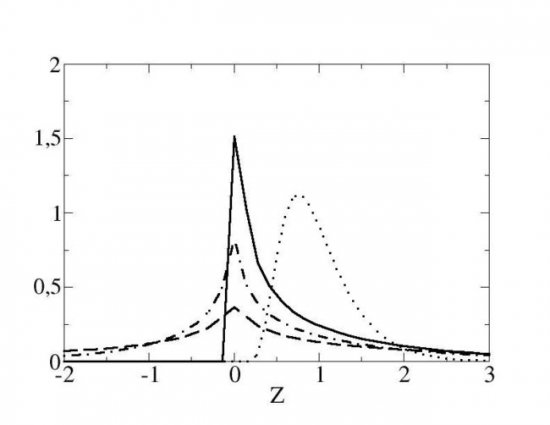The study “On fluctuating momentum-exchange in idealised models of air-sea interaction” by Achim Wirth award the NPG Paper of the Month.
It applies concepts from non-equilibrium statistical mechanics to air-sea interaction. Due to the difference in the characteristic timescales of the fast dynamics of the light atmosphere and the slow dynamics of the heavy ocean, air-sea interaction is a textbook case for employing these methods which date back to the works of Albert Einstein, who developed them to describe the slow dynamics of a heavy Brownian particle subject to collisions with fast moving light molecules. The manuscript shows analytical calculations for the models with deterministic and random forcing (white and colored) : while the short term behavior is similar in all models (only small quantitative differences are found), the long-term behavior differs qualitatively between the models. By means of the fluctuation-dissipation-relation, which connects the fast atmospheric motion to the slow oceanic dynamics, of the fluctuation-dissipation-theorem , comparing the response to an external forcing to internal fluctuations, and by using results from numerical integrations of stochastic differential equations the author shows that the fluctuation-theorem , which compares the probability of positive to negative fluxes of the same magnitude, holds for the energy gained by the ocean from the atmosphere.
The results show that when ocean velocities are not considered in the models of air–sea interaction, the atmosphere loses, on average, more energy and the ocean gains more energy, as compared to when the ocean velocities are taken into account. This work shows that, since determining the response to a sudden change in the external forcing is a key in many applications, such as the response of the atmospheric and oceanic planetary-boundary-layer dynamics to a change in the synoptic weather condition, establishing fluctuation-dissipation relationships can provide deeper understanding on the role of momentum-exchange in modeling the ocean-atmosphere interaction.






